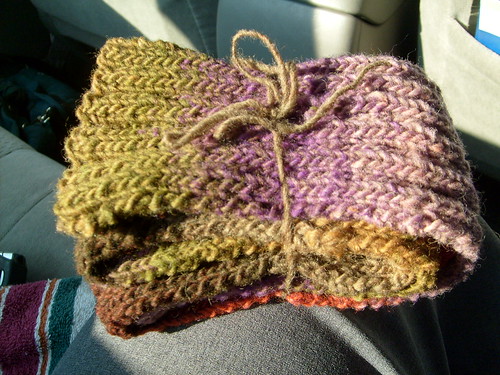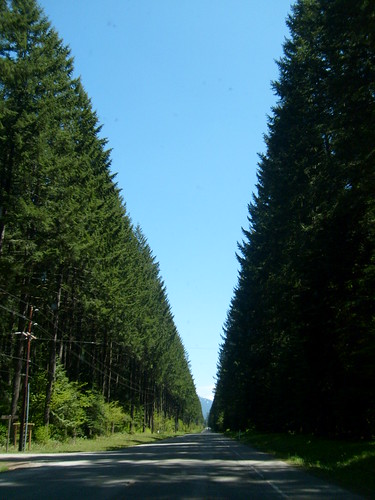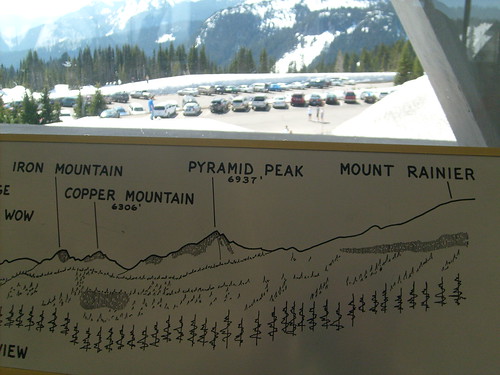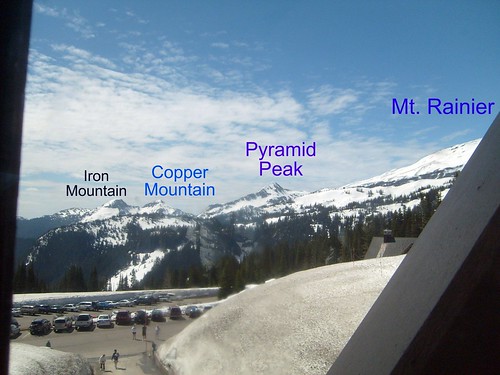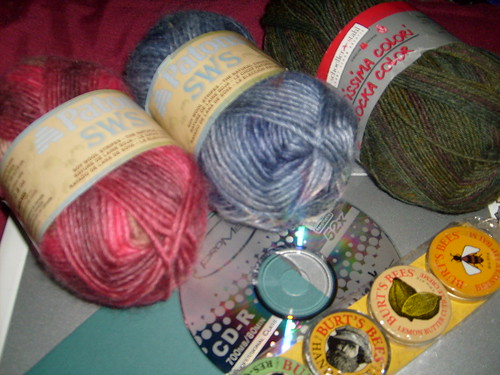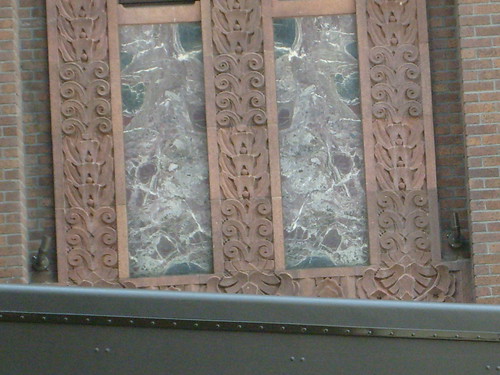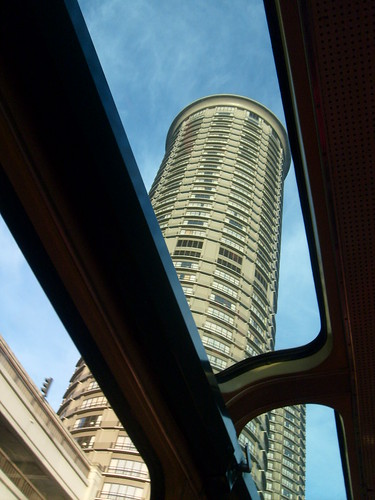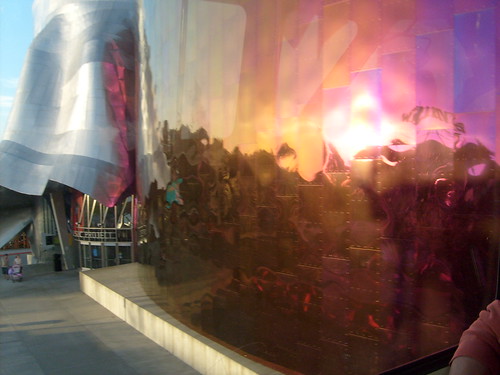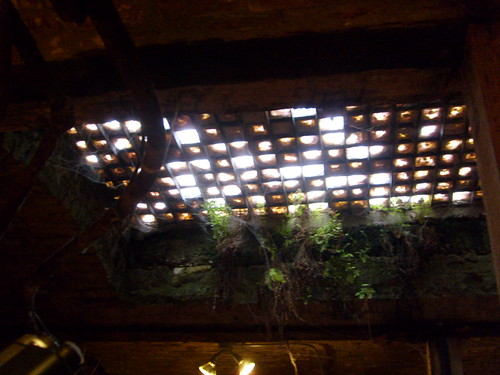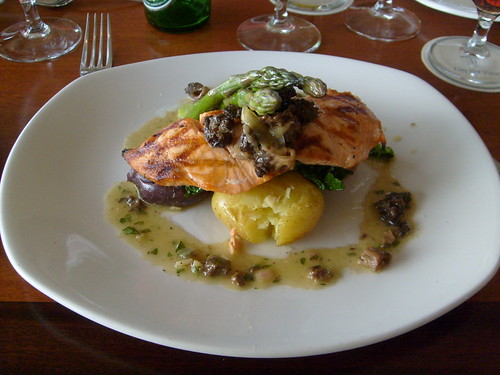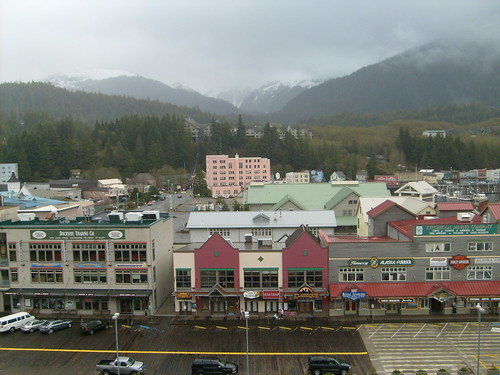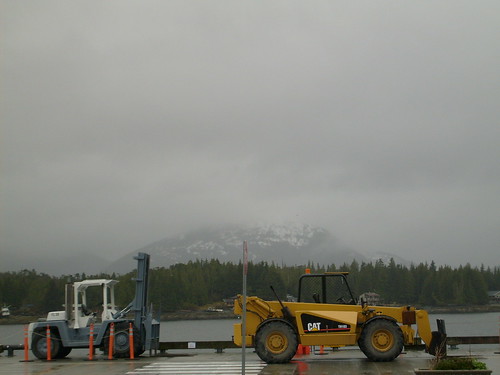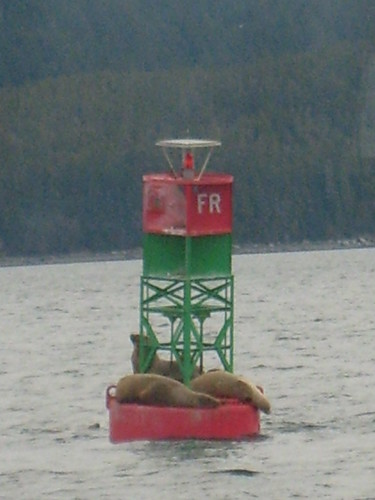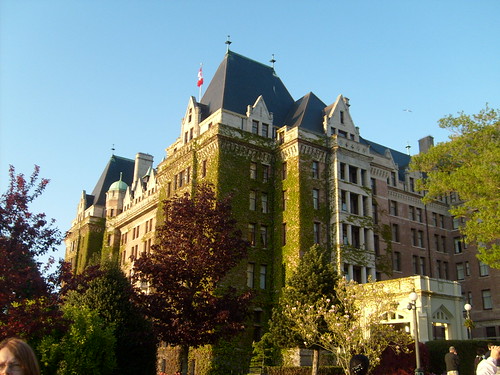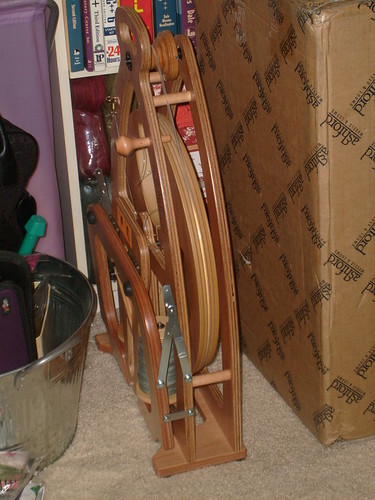 I bought a new wheel. What can I say? I'm weak. I've been eying a portable wheel since I signed up to go to SOAR. I truly heart my old Louet, but it's just not made for traveling. When I got a 10% paypal coupon, I jumped at the excuse, er, I mean, "opportunity" to get a good deal on a new wheel from ebay. So what have I spun so far?
I bought a new wheel. What can I say? I'm weak. I've been eying a portable wheel since I signed up to go to SOAR. I truly heart my old Louet, but it's just not made for traveling. When I got a 10% paypal coupon, I jumped at the excuse, er, I mean, "opportunity" to get a good deal on a new wheel from ebay. So what have I spun so far?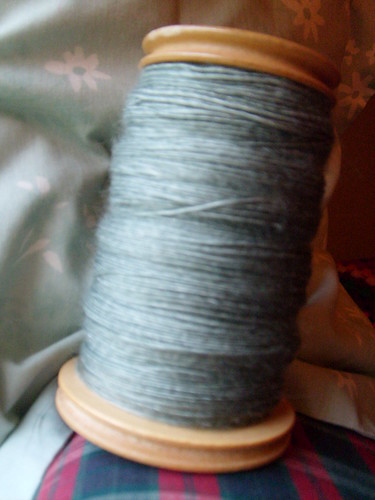 This is 4oz of a merino tencel blend in "spruce" from Kendig Cottage. I'm working on another four ounces now.
This is 4oz of a merino tencel blend in "spruce" from Kendig Cottage. I'm working on another four ounces now.I also took the Joy on it's first outing this weekend to a cotton spinning class at the sadly soon-to-close Springwater Fiber. It was a very small class of just two students. Sylvia, Springwater's fabulous spinning teacher, packed lots of information into a three hour class. We got to pick seeds out of cotton, which is a real pain in the butt - no wonder Eli Whitney is in all the elementary school history books. Because of cotton's short staple length (1 to 1.5 inches on average, compared to 3 in or more for wool), it's takes a lot more twist to spin a strong yarn. We tried out different preparations.
 From left to right:
From left to right:1. hand-seeded (ugh!), hand-carded
2. light commercial prep, sliver
3. same as 2, only hand-carded before spinning
4. same as 3, only spun with long draw.
5. commercial prep, organic brown.
6. commercial prep, low land cotton (I think?)
7. commercial prep, pencil roving
8. cotton ball, dyed blue (1/2 inch staple length - yikes!)
9. cotton tencel blend, spindle spun.
The pencil roving took no drafting at all, so it felt like zero-effort yarn. The cotton tencel was also nice, the tencel making it infinitely easier to draft.
In knitting news, I made an angel scarf for the International Scarf Exchange. During the stash reorg, I dug up some nice alpaca.
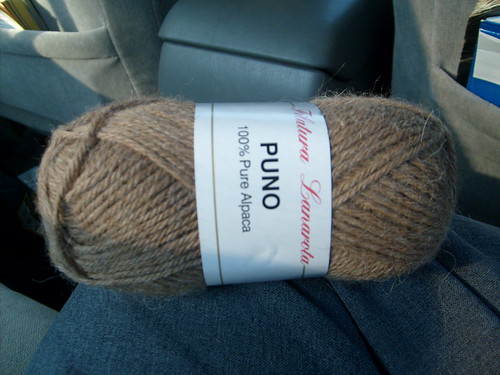 I had totally forgotten about them until they appeared from the bottom of the stash like furry little potatoes. They weren't even recorded in my Ravelry stash (which means they didn't really exist, right?) I found a pretty, but easily memorized lace pattern on Ravelry and made this:
I had totally forgotten about them until they appeared from the bottom of the stash like furry little potatoes. They weren't even recorded in my Ravelry stash (which means they didn't really exist, right?) I found a pretty, but easily memorized lace pattern on Ravelry and made this: I did a lot of the knitting during UM Summer Chorus rehearsals, so there's a lot of spitty German text embedded in this scarf. Hopefully, it all came out in blocking :)
I did a lot of the knitting during UM Summer Chorus rehearsals, so there's a lot of spitty German text embedded in this scarf. Hopefully, it all came out in blocking :)


